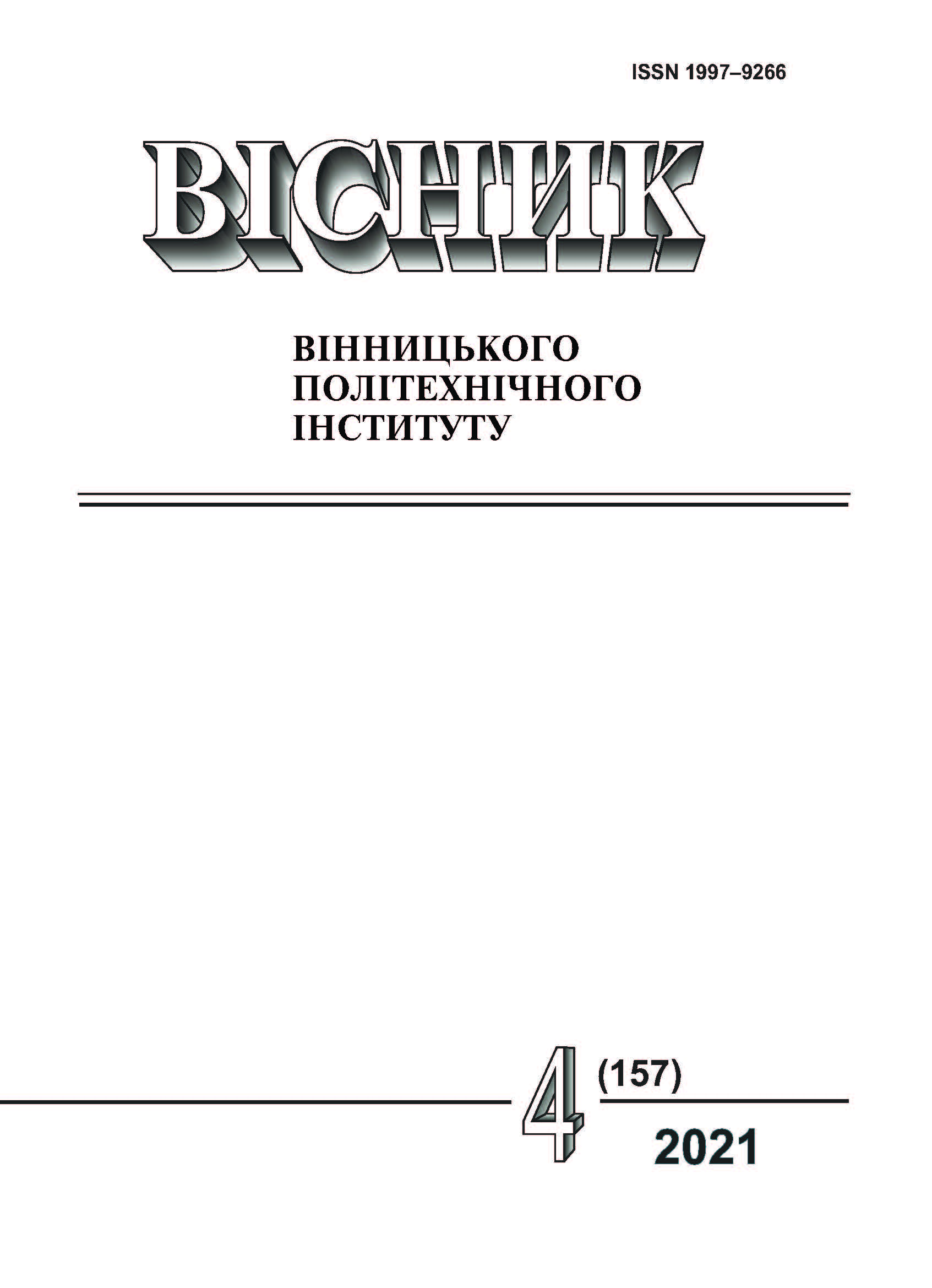Modified Ecotoxy Method for of Integrated Assessment of Potential Environmental Hazard of Modern Pesticides
DOI:
https://doi.org/10.31649/1997-9266-2021-157-4-32-39Keywords:
pesticides, ecotox, toxicity, environmental safetyAbstract
The problem of pesticide pollution of all layers of the biosphere remains acute not only in Ukraine but also around the world. In this case, pesticides and their preparations (PP) are "toxic substances, their compounds or mixtures of substances of chemical or biological origin, designed to destroy, regulate and stop the development of harmful organisms that affect plants, animals, humans and damage property, as well as rodents, weeds, trees, shrubs, clogging fish species "[1]. That is, these are chemical compounds that are used to protect plants and agricultural products, as well as to control vectors of dangerous diseases. However, all of them, or the vast majority of them, are toxic and pose a significant danger to humans and the environment. Therefore, it is necessary to develop such a simplified and universal, but at the same time, effective method of gradation according to the degree of their toxicity.
The essence of the modified method of ecotoxics is that such a method of calculation should include the main toxicological parameters of the chemical detected in the environment and indicators of spontaneous cleavage (decomposition) of the compound in a particular environment.
Thousands of brands of pesticides from many manufacturers are used worldwide. New more effective pesticide mixtures are constantly being developed and registered in Ukraine. However, the active ingredients of pesticides are relatively few. The dangers to the environment and human health from the use of pesticides are well known, but the dependence of pesticide residual activity on the environment is poorly understood.
Relevance: when using pesticides, the main hazard parameter is LD50 in rats or other warm-blooded animals. However, toxicity measures such as exposure time or pesticide application rates are not considered. Quite often very toxic pesticides decompose quite quickly in the soil and on the contrary low-toxic pesticides poison the environment for many months or even years.
Although there are a large number of patented brands of pesticides, their chemical composition does not differ significantly. Pesticides of the same composition are patented under different names to generate profits without paying interest to the patent owner and, accordingly, to generate additional profits. As a rule, the active substance in pesticides from different manufacturers may be similar. The ratio of the active substance to the solvent, the amount and composition of solvents, the mixture in a certain ratio of several active substances of pesticides are excellent. Table 5.9 lists the trade names of pesticides used in Ukraine and supplied by international chemical giants.
References
Р. В. Петрук, і В. Г. Петрук, Дослідження забруднень екосистем основними пестицидами за допомогою методики екотоксів. Вінниця, Україна: ВНТУ, 2020.
Верховна Рада України, Закон України № 86/95 «Про пестициди і агрохімікати», 1995. [Електронний ресурс]. Режим доступу: https://zakon.rada.gov.ua/laws/show/86/95-%D0%B2%D1%80#Text .
Н. Н. Мельников, Пестициды. Химия, технология и применение. М.: Химия, 1987, 712 с.
Н. Н. Мельников, К. В. Новожилов, С. Д. Белан, и Т. Н. Пылова, Справочник по пестицидам. М.: Химия, 1985, 352 с.
Н. Н. Мельников, «К вопросу сравнительной экотоксичности некоторых фунгицидов,» Агрохимия, № 6, с. 65-66 , 1997.
Н. Н. Мельников, и С. Р. Белан, «Сравнительная экотоксикологическая опасность некоторых инсектицидов — производных фосфорных кислот, карбаминовой кислоты и синтетических пиретроидов,» Агрохимия, № 1, с. 70-72, 1997.
І. М. Трахтенберг, Книга про отрути та отруєння. Нариси токсикології, Тернопіль, Україна: ТМДУ, 2008, 364 с.
R. Petruk, and V. Kostyuk, “Ecological safety of pesticide use in ukraine,” Environmental problems, vol. 2, no. 3, 2017.
В. П. Крамаренко, Токсикологічна хімія, Київ, Україна, 1995, 423 с.
І. І. Клімкіна, і В. Ю. Грунтова, Основи екологічної токсикології. Методичні рекомендації. Донецьк, Україна: НТУ, 2015, 44 с.
В. М. Ісаєнко, Т. І. Білик, і Л. С. Кіпніс, Основи екологічної токсикології, лаб. практикум. Київ, Україна: НАУ, 2007, 68 с.
Ю. С. Каган, Общая токсикология пестицидов. Киев: Здоровье, 1981, 174 с.
О. О. Сорочан, Біохімічні основи екотоксикології, навч посіб. Донецьк, Україна : Оксамит-Текс, 2006, 80 с.
Р. В. Петрук, «Наукове обґрунтування оптимальних форм інтегрованого управління екологічною безпекою непридатних пестицидів та пестицидвмісних відходів.» Автореферат дис. д-ра тех. наук. Київ, Україна, 2020
Р. В. Петрук, «Наукове обґрунтування оптимальних форм інтегрованого управління екологічною безпекою непридатних пестицидів та пестицидвмісних відходів.»: дис. д-ра. тех. наук. Київ, Україна: ДЕАПОУ, 2020, 345 с.
Th. Plattner, T. Plapp, and B. Hebel, “Integrating public risk perception into formal natural hazard risk assessment,” Nat. HazardsEarthSyst. Sci., vol. 6, pp. 471-483, 2006.
Г. И. Марчук, Математическое моделирование в проблеме окружающей среды. Москва: Наука. Главная редакция физико-математической литературы, 1982, 320 с.
Консолідований державний реєстр пестицидів і агрохімікатів, дозволених до використання в Україні за 2008–2015 роки. [Електронний ресурс]. Режим доступу: www.data.gov.ua .
А. П. Ранський, Р. В. Петрук, «Повний лужний гідроліз некондиційного пестицидного препарату диметоат з отриманням екологічно безпечних продуктів,» Вісник НАУ, № 1, с. 258-265, 2012.
Directive on the approximation of laws, regulations and administrative provisions relating to the classification, packaging and labelling of dangerous substances: сoll. of reg.doc. Directive 67/548/EEC L196 European Union laws, 1967, рр. 1-98. [Electronic resource]. Available: https://eur-lex.europa.eu/legal-content/EN/TXT/PDF/?uri=CELEX:02004R0648-20150601&from=LV .
Downloads
-
PDF (Українська)
Downloads: 228
Published
How to Cite
Issue
Section
License

This work is licensed under a Creative Commons Attribution 4.0 International License.
Authors who publish with this journal agree to the following terms:
- Authors retain copyright and grant the journal right of first publication.
- Authors are able to enter into separate, additional contractual arrangements for the non-exclusive distribution of the journal's published version of the work (e.g., post it to an institutional repository or publish it in a book), with an acknowledgment of its initial publication in this journal.
- Authors are permitted and encouraged to post their work online (e.g., in institutional repositories or on their website) prior to and during the submission process, as it can lead to productive exchanges, as well as earlier and greater citation of published work (See The Effect of Open Access).





